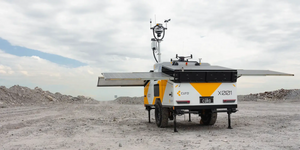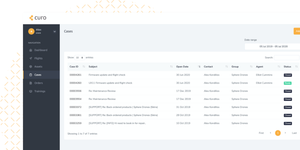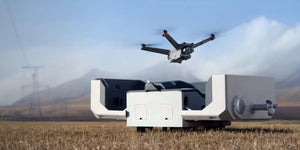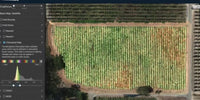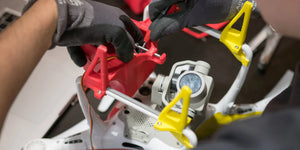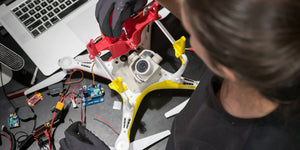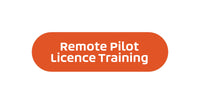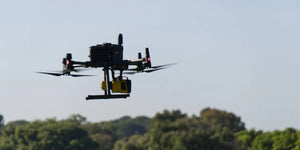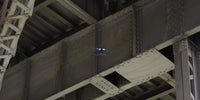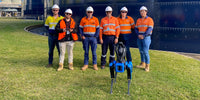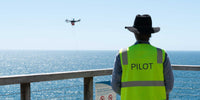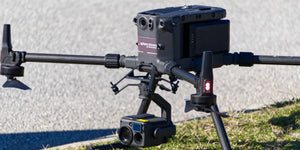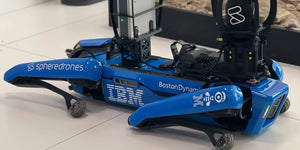According to a 2016 McKinsey* report, the construction industry was, at that time, absolutely ripe for disruption.
Large construction projects in Australia and the US, both commercial and residential, were typically taking 20 per cent longer to finish than originally planned and were coming in at staggering percentages over budget – in some cases 80 per cent!
The report also noted construction productivity had actually declined in some markets and financial returns for builders and contractors were often low and volatile.
Not good news!
Construction and technology: Strange bedfellows
It’s no secret the construction industry is notoriously slow in adopting and then adapting new technology, so there was some concern and rumblings about the long-term viability of projects.
Traditional methods of construction, many of them holdovers from previous projects and in many cases generations, were stifling technology with the industry continuing to show a perplexing resistance to change despite, at least theoretically, some of these new technologies looking viable in operation.
So, what to do?
Enter UAVs – also known to the rest of the world as ‘drones.’
Construction and the drone
Fast forward to 2018 and like the now ubiquitous flat screen TV, there has been a dramatic decrease in the manufacturing cost of drone technology particularly in professional grade drones for construction. Today, they can come complete with mountable, lightweight HD cameras and other survey equipment for as little as $2000.
This small technology investment has been seen to dramatically improve surveys, site visibility, progress reporting, and inspection processes, while slashing the previous costs and operating time frames for these activities.
So is it a simple decision to engage them?
Let’s look in more detail at the benefits and drawbacks of their implementation in construction.
Droning on construction benefits
For many of us, drones began as toys used by hobbyists and photographers but over the past few years, drones have made huge inroads into the commercial world.
In the field of construction, we have, via our own knowledge base and sound industry research, gathered 10 key benefits (we know there are many more), as well as some drawbacks that have been discussed, written about and indeed proven on the work site itself.
Benefits:
- Developing new business. Drone photography has already proven itself to be a valuable sales tool. We all know real estate uses it to sell houses, so in construction, the leap to using drone technology for such things as surveying and planning capabilities was not a large nor costly one.
- Adding a visual element to the project outcome. Using drone photography has been seen to help both the construction team and project owners see how the project is progressing (as a whole) as well giving scope to visualising how the final product will look - which leads into our next point!
- 3D Modelling. Construction companies are moving into 3D modelling with gusto! With available software, simply amazing and realistic walk and fly through videos are now available making the construction project seem much more ‘real’ to both the team and client.
- Software & Apps. As noted above, high-quality drone software and apps are being developed at a rapid rate allowing simply amazing construction applications to be created. Some key software includes Airwave, Pix4D and DroneDeploy, all which simplify planning, capture and processing of drone data. For apps; Hover, Autopilot, and AirMap, make drone management in construction easier and more functional by the day.
- Helping in the bidding and tender process. We all love a great visual. Drone imagery can add wonders to the bidding and tender process at a very reasonable cost.
- Improve asset and material management. Drones equipped with streaming video capability can and have helped monitor job sites for suspicious activity and theft. As well, the construction team can use drones to monitor locations and quantities of assets and materials at a glance.
- Improve invoicing accuracy. Drones can help teams monitor work completion more effectively and accurately, and this can add to ensuring invoicing consistency.
- Improve quality. This is a big one. Drones can vastly increase the ability to complete quality inspections in large and hard to reach areas in an efficient and very cost effective manner.
- Minimise rework. Using drones to increase the number of inspections means you are likely to catch more mistakes before they become a bigger problems!
- Improve safety. This alone is worth the ticket of admission. Drones can perform inspections in dangerous areas without putting anyone at risk. Drones also allow you to identify and mitigate potential hazards before they cause harm.

What about risks?
OK, we can’t highlight benefits without noting risks.
Quite simply, the increasing popularity of drones in construction has been instrumental in creating the corresponding risks.
As drones become prevalent at construction sites, it has become essential that contractors know the current regulations for unmanned aircraft systems, as well as their potential risks and best practices for avoiding incidents and claims.
Meeting requirements
At a minimum, companies will need to ensure their drones comply with all Civil Aviation Safety Authority (CASA) requirements. This includes licensing of pilots and certification of the companies that operate them. If they do not comply and are caught, risks include large fines, and in some cases, possible time in the Big House!
The need for insurance
The sheer aerial reach of drones also brings with it the possibility of collisions with people, buildings and other aircraft, leading to property damage, personal injury, and loss of life in extreme cases. It is imperative construction companies using drones have appropriate insurance to cover these risks.
As a risk precaution, it is recommended those in the construction sector who are considering using drones, should purchase more extensive insurance to protect themselves and operators from things such as public liability, professional indemnity and cyber cover.
As technology and drone popularity increases, risks and solutions to managing these risks will become clearer. This noted, it is recommend those in the industry ensure you are protected and, as we stand here today, start thinking about different types of exposure in these still largely uncharted areas.
Sphere Drones
If you are already operating drones in the construction space or are keen to learn more about it, we recommend you speak to us. We bring extensive knowledge and experience to the commercial drone sector and offer comprehensive sales, service and industry advice, allowing the creation and ability to drive across-the-board solutions for clients in construction.
As a research and development facility (R&D), we also develop proprietary drones and drone equipment for the expanding construction industry.Visit our website at www.spheredrones.com.au.
